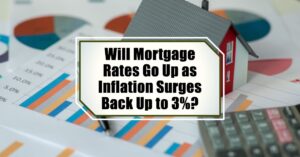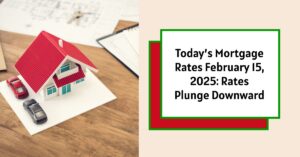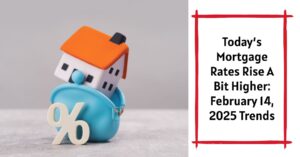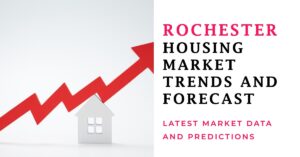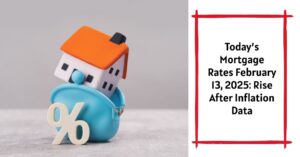Florida, the Sunshine State, is known for its beautiful beaches, and vibrant culture, and as a sought-after destination for tourists and retirees alike. However, it's also home to some of the most expensive cities in the United States. Here's a look at the most expensive cities in Florida, where the cost of living can be as sunny as the weather.
Most Expensive Cities in Florida
1. Key Biscayne
With stunning white sand beaches and luxurious properties, Key Biscayne tops the list. The median home value here is a staggering $1,430,100. This exclusive island paradise offers a secluded escape with world-class amenities.
2. Palm Beach
Known for its opulent estates and wealthy residents, Palm Beach has a median home value of $1,211,900. Beyond the grand architecture and designer shops, Palm Beach offers a sophisticated cultural scene and pristine beachfront.
3. Naples
This city isn't just about beautiful sunsets and championship golf courses; it also boasts a median home value of $1,080,000. Naples provides a vibrant downtown area, upscale shopping, and easy access to the stunning beaches of the Paradise Coast.
4. Pinecrest
With lush landscapes and large estates, Pinecrest has a median home value of $938,600. This family-friendly community offers excellent schools, parks, and a strong sense of community.
5. Coral Gables
A city with Mediterranean-style architecture and historic landmarks, Coral Gables has a median home value of $856,600. Nicknamed “The City Beautiful,” Coral Gables combines a charming historic district with a lively nightlife scene.
6. Longboat Key
This barrier island offers serene beaches, world-class resorts, and a median home value of $724,600. Longboat Key is perfect for those seeking a luxurious island getaway with a focus on relaxation and recreation.
7. Islamorada
Part of the Florida Keys, Islamorada is known for its sport fishing, stunning coral reefs, and median home value of $708,400. Islamorada is a haven for outdoor enthusiasts and those seeking an island lifestyle.
8. Sanibel
Famous for its shell beaches and wildlife refuges, Sanibel has a median home value of $703,800. Sanibel offers a tranquil escape with a focus on nature conservation and outdoor activities.
9. Key West
A city with a rich history, vibrant nightlife, and colorful architecture, Key West has a median home value of $686,700. Key West is known for its unique character, arts scene, and lively Duval Street.
10. Southwest Ranches
Known for its rural ambiance and equestrian lifestyle, Southwest Ranches has a median home value of $670,100. Southwest Ranches offers a peaceful escape with plenty of space, equestrian facilities, and a strong sense of community.
11. Lake Butler
With its peaceful lakes and high-end homes, Lake Butler offers a tranquil lifestyle. The median home value here is $663,800.
12. Parkland
Parkland isn't just another city; it's a haven for nature lovers with an abundance of park spaces. This family-oriented community boasts a median home value of $631,000.
13. Surfside
This small town packs a punch. Surfside offers beachfront living with stunning ocean views, perfect for those seeking a relaxed coastal lifestyle. The median home value in Surfside sits at $619,300.
14. Palmetto Bay
Enjoy the best of both worlds in Palmetto Bay. With access to waterways and parks, this city provides opportunities for recreation and a connection with nature. The median home value in Palmetto Bay is $585,600.
15. South Miami
South Miami isn't just about beautiful houses; it offers a vibrant downtown with a thriving cultural scene. The median home value in South Miami is $569,100.
16. Boca Raton
Beyond the world-class golf courses, Boca Raton boasts beautiful parks and beaches. This city offers something for everyone, with a median home value of $561,000.
17. Weston
Weston is known for its well-planned communities and excellent schools, making it a perfect place to raise a family. The median home value in Weston is $550,800.
18. Sunny Isles Beach
Sunny Isles Beach isn't short on sunshine or luxury. This area is famous for its stunning Atlantic Ocean views and luxury condominiums. The median home value in Sunny Isles Beach is $540,700.
19. Aventura
Aventura is a shopper's paradise with upscale shopping centers alongside its luxurious condos. This vibrant city offers a cosmopolitan lifestyle, with a median home value of $535,300.
20. Fort Lauderdale
Fort Lauderdale isn't just a city; it's a boater's paradise. Known for its extensive network of boating canals and stunning waterfront properties, Fort Lauderdale has a median home value of $520,900.
21. Sarasota
Sarasota isn't just beautiful beaches. This cultured city offers a vibrant arts scene alongside stunning Gulf Coast views. The median home value in Sarasota is $517,800.
22. West Palm Beach
Beyond the beach, West Palm Beach boasts a revitalized downtown with historic neighborhoods to explore. This city offers something for everyone, with a median home value of $506,700.
23. Delray Beach
Delray Beach isn't all sunshine; it's also got soul! Known for its lively Atlantic Avenue and energetic arts scene, Delray Beach offers a dynamic atmosphere. The median home value here is $501,500.
24. Jupiter
Jupiter blends natural beauty with historic charm. Home to beautiful beaches and the iconic Jupiter Lighthouse, this relaxed coastal town offers a median home value of $498,300.
25. Wellington
Calling all horse lovers! Wellington is a haven for the equestrian community, known for its world-class events and facilities. The median home value in Wellington sits at $495,900.
26. Marco Island
Escape to paradise on Marco Island. This barrier island in the Gulf of Mexico offers stunning beaches, luxurious resorts, and a relaxed island lifestyle. The median home value on Marco Island is $489,000.
27. Windermere
Embrace the lake life in Windermere. Nestled among the scenic Butler Chain of Lakes, this charming town offers a peaceful escape with a strong sense of community. The median home value in Windermere is $482,500.
28. Winter Park
Winter Park offers a unique blend of such as cultural attractions, charming neighborhoods, and historic sites. The median home value in Winter Park is $476,800.
29. Anna Maria
Island life awaits in Anna Maria. This quaint island community offers a relaxed atmosphere with stunning waterfront views. The median home value in Anna Maria is $472,600.
30. Coconut Grove
Dive into the bohemian paradise in Coconut Grove. Known for its eclectic shops, artistic vibe, and lush surroundings, Coconut Grove offers a unique enclave within Miami. The median home value in Coconut Grove is $467,200.
31. Bal Harbour
Don't let the size fool you! This small, affluent village packs a punch. Bal Harbour is famous for its luxury shopping and upscale condominiums, making it a haven for those seeking high-end living. The median home value in Bal Harbour sits at $462,900.
32. Ponte Vedra Beach
A paradise for golfers and beach lovers alike! Ponte Vedra Beach boasts top-rated golf courses alongside pristine beaches. This scenic escape offers a median home value of $458,400.
33. Fisher Island
Exclusivity awaits on Fisher Island. Accessible only by ferry or private boat, this island is an ultra-luxury community known for its opulent estates and world-class amenities. The median home value on Fisher Island is a staggering $453,700.
34. Tequesta
Old Florida charm meets modern luxury in Tequesta. This waterfront community offers a unique blend of history and modern conveniences. The median home value in Tequesta is $449,300.
35. Key Largo
Kick off your shoes and relax in Key Largo. As the first island of the Florida Keys, Key Largo is a haven for divers and those seeking a laid-back island lifestyle. The median home value in Key Largo is $444,900.
These cities exemplify the diverse range of living experiences Florida has to offer, from island retreats to lakeside estates. The allure of Florida's most expensive cities lies not just in their real estate but also in the lifestyle and natural beauty that comes with residing in these sought-after locations.
Whether it's the tranquility of a beachfront property or the exclusivity of a private island, these cities cater to those seeking the pinnacle of luxury and comfort in the Sunshine State.
For those considering a move to one of these cities, it's essential to consider not only the cost of purchasing a home but also the ongoing expenses associated with living in these desirable locations. Despite the higher costs, many find the investment worthwhile for the quality of life and opportunities these Florida cities provide.


